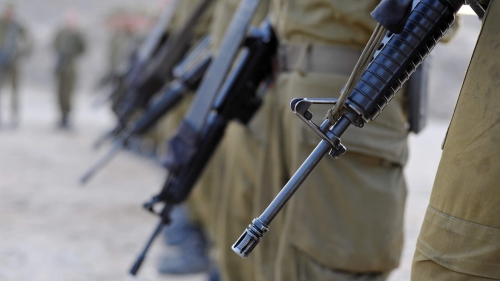Deir Yassin: The Agony | Documentary
Remembering the 1948 siege of Deir Yassim, Jerusalem. On April 9, 1948, the small Muslim village of Deir Yassin just outside Jerusalem was attacked by Jewish Israelis, and 100 unarmed civilians massacred.
With powerful archive footage from the siege itself, we relive the terror which has inspired Palestinian suicide attacks ever since. Produced by Link Productions. Read the full transcript.
( Source: Journeyman Pictures )
The Deir Yassin massacre took place on April 9, 1948, when around 130 fighters from the Zionist paramilitary groups Irgun and Lehi killed at least 107 Palestinian Arab villagers, including women and children, in Deir Yassin, a village of roughly 600 people near Jerusalem, despite having earlier agreed to a peace pact. The massacre occurred while Jewish militia sought to relieve the blockade of Jerusalem during the civil war that preceded the end of British rule in Palestine.
The village put up stiffer resistance than the Jewish militias had expected and they suffered casualties, but it fell after house-to-house fighting. Some of the Palestinian Arab villagers were killed in the course of the battle, while others were massacred by the Jewish militias while trying to flee or surrender. A number of Palestinian Arab prisoners were executed, some after being paraded in West Jerusalem, where they were jeered, spat at, stoned, looted, and eventually murdered. In addition to the killing and widespread looting, there may have been cases of mutilation and rape. Despite an original boast by the Jewish militias that 254 Palestinian Arabs had been killed, modern scholarship puts the death toll at far fewer. Palestinian historian Aref al-Aref counted 117 victims, seven in combat and the rest in their homes. The number of wounded is estimated to between 12 and 50. Five of the attackers were killed and a dozen wounded.
The massacre was condemned by the leadership of the Haganah, and the Jewish Agency for Palestine sent Jordan's King Abdullah a letter of apology, which he rebuffed, held them responsible for it and warned of "terrible consequences" if similar incidents occurred. The massacre became a pivotal event in the Arab–Israeli conflict for its demographic and military consequences. The narrative was embellished and used by various parties to attack each other—by the Palestinians against Israel; by the Haganah to play down their own role in the affair; and by the Israeli left to accuse the Irgun and Lehi of blackening Israel's name by violating the Jewish principle of purity of arms.
News of the killings sparked terror among Palestinians across the country, frightening them to flee their homes in the face of Jewish troop advances and it strengthened the resolve of Arab governments to intervene, which they did five weeks later. Four days after the Deir Yassin massacre, on April 13, a reprisal attack on the Hadassah medical convoy in Jerusalem ended in a massacre killing 78 Jews, most of whom were the medical staff. Archival material in Israeli military deposits documenting the massacre remain classified.
( Source: Wikipedia )
Topics: Genocide (Ethnic Cleansing), History, Israel, Nakba, Palestine, Palestinian Refugees Channel: Documentaries
Views: 641
Related Suggestions




























